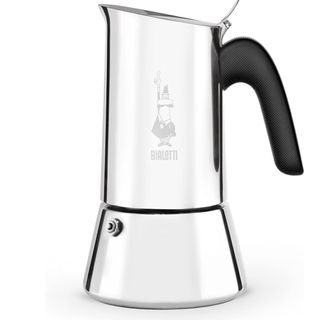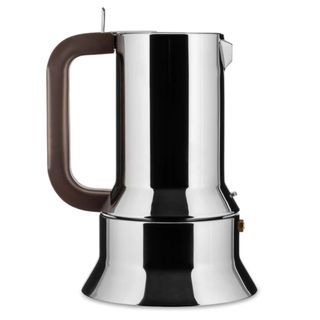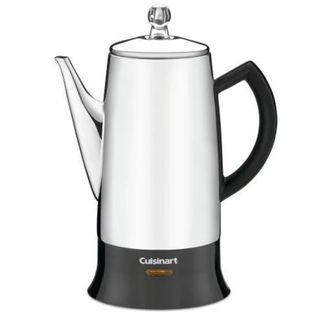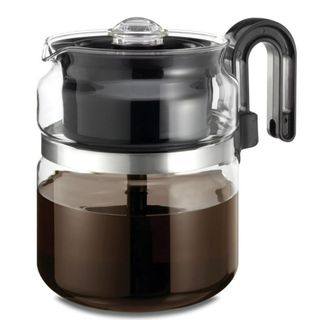The best coffee makers in 2024 – a barista's complete guide
We've tested the bold, the beautiful, and the bitter to give you everything you need to know
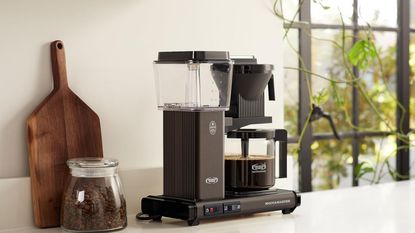

The most common question people ask me is 'What's the best coffee maker?' It's a simple enough question, but the answers are different depending on what kind of coffee you like to drink.
For most people, the answer is simple. The best drip coffee makers can brew uncomplicated coffee, serving up your caffeine fix alongside some speciality flavors. However, that's not where your search for the best coffee makers should end.
I trained as a barista back in 2016, and ever since then, I’ve held a special place on my countertop for the best espresso machines. While espressos are my daily driver, I've come to love coffee in every form. No-fuss filter coffee is brilliant for extracting beautiful flavors in bucket-size quantities; the best single-serve and automatic coffee makers are useful when I need to caffeinate the whole household and just need speed.
In the last nine months, I've tested over sixty of the best coffee makers on the market. From premium espresso machines all the way through to personal percolators and pour-overs, just tell me your coffee order or brewing method and I'll have covered it.
In this guide I'll deep dive into each brewing style and coffee maker, highlighting the key features you should look for when choosing the perfect one for you. If you've got any burning questions, such as whether you need to invest in a coffee grinder or not, I'll answer them too.
Quick List
If you're here for the TLDR, here's a roundup of the six best coffee makers on the market. Everyone from beginners to baristas could brew a delicious cup of coffee in one of these, so here are the headlines. I'll give you more information further down.
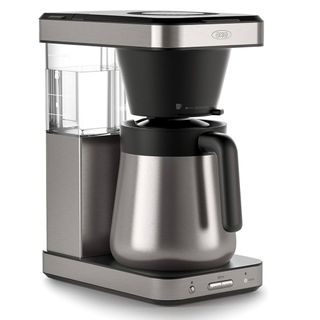
The best overall
This makes simply delicious coffee. Whether you want a single serving or enough for eight, the OXO delivers flavorful filter coffee in a matter of minutes. We'd give it best for beginners, best value, best drip, and more if we could. The only accolade it's not winning is the most beautiful.

The best for drip coffee
If you're looking for a coffee machine that will last a lifetime, look no further. This is a little more technical than the OXO, a lot quieter, and comes in a range of colors too. It's the expert's take on OXO.
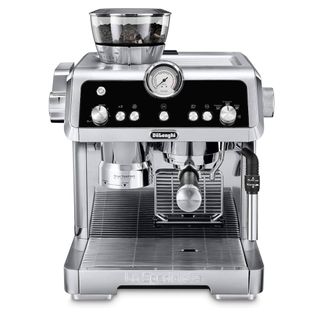
The best for café-style coffee
I've never tested an espresso machine that is as versatile as this (it can even make cold brew). We did customer tests, handing this to absolute beginners and they made barista-quality coffee in it without breaking a sweat or dropping a bean. It's still technical and quite fiddly, so good for aspiring coffee nerds.
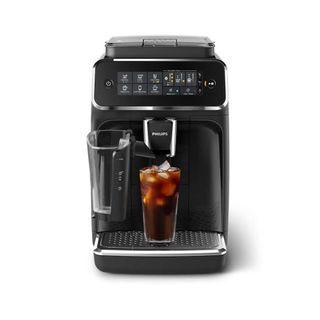
The best for beginners
The trifecta of luxury, quality, and value, this coffee maker can do it all. It's automatic, so grinds, brews, and serves your coffee at the touch of a button. You'll be able to make delicious coffee for all the family, but you're spending more money for the privilege of hands-off coffee.
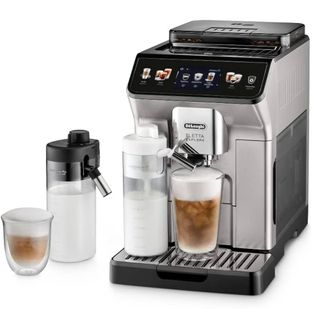
The best automatic
All you have to do is tap a screen to gain access to over 52 different and delicious coffees. It might sound like overkill, but each and every one is top quality, from cortado to cold brew. It's a versatile option for busy, hands-off coffee snobs.
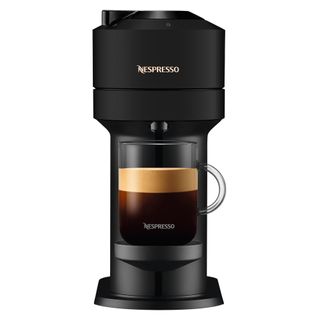
The quickest
Single-serve coffee might not score top marks for full flavors, but it will for speed. This can make quick, delicious coffee in seconds, but you'll have to buy a milk frother separately if you want to make milky coffees too.
How to choose the right coffee maker for you
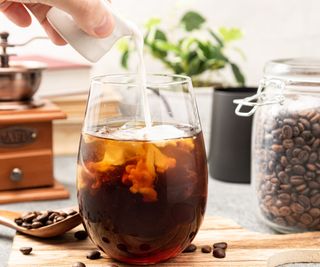
When you're choosing the perfect coffee maker for you, the best place to start is with the kinds of coffee that you enjoy. Follow the flavors and combinations that you'd choose if money and skill were no object. Then you can backfit the type of coffee maker that you want. To make it really clear, I've spelled out the basics of some of the most popular coffee makers and how they are related to your favorite coffee drinks. We'll dive deeper into the details further down the page.
- If you like punchy espressos and ultra-strong coffee you'll need an espresso machine, moka pot, or an AeroPress. These use pressure and temperature to extract full flavors, making a thick, delicious cups of coffee.
- If you like frothy milky coffees, like lattes and cappuccinos, you'll be looking at espresso machines. These all have steam wands which will texture your milk, some work automatically, so all you have to do is touch a button. Others will need you to be a little more hands-on. Alternatively, some single-serve machines come with steam wands or separate milk frothers to help you out.
- If you like black coffee that's full of flavor, the world of coffee makers is your oyster. French press or pour-over coffee makers will give you specialty coffee flavors, as will your drip coffee maker and espresso machine.
- If you like big batches of black coffee that won't need milk the best drip coffee makers will cover all bases. Some of these can get quite fancy, but you can also find really simple models too.
- If you like iced coffee, you've got a few options. Some espresso machines come with iced coffee functions. Similarly, you can buy single-serve makers which specialize in iced coffees. On both of these, you'll want to check your machine's specifications, because not every single one will cover your needs.
- If you're on the sweet, cold brew coffee trend, you can invest in a dedicated cold brew coffee maker, or work on a bit of a budget using a French press.
- If you like a bit of everything above you'll want an automatic espresso machine. The 'espresso' part is often cut out of the name, so you'll know them as automatic machines. If that's not in your budget, there are plenty of single-serve makers that can also cover every conceivable coffee order on the menu.
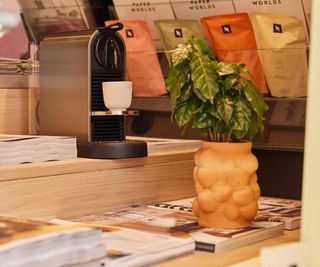
Of course, it's not just about the kinds of coffee that you like. Other factors will play into your decision. Before you start shopping make sure that you're clear on how where your coffee maker will fit into your kitchen, how much money you're willing to spend, and how developed your coffee-making capabilities are. There's nothing worse than falling in love with something you don't have the skills, space or budget for.
Space
If you have lots of space, you can choose almost any coffee maker. However, if your kitchen is compact, you'll probably want to steer clear of espresso machines and automatic coffee makers. These tend to be big appliances. You could still fit them on your countertop, but you'd have to work to do it.
Time
If you don't mind taking your time with coffee, then you'll have the pick of the bunch. However, if you're normally five minutes late for being ten minutes late, you'll want a quick machine: pod machines, pre-set drip coffee makers, and automatic machines will be your best friends. Capacity If you're the only coffee drinker in the house, you might not need a big machine. Pour-overs are an excellent option for single-cup coffee drinkers. However, if there's ten of you in your home, a drip coffee maker will cater to the masses.
Ease
If you normally buy your coffee from a barista, you might not enjoy being very hands-on when making coffee. For that reason, a bean-to-cup machine would suit you really well. It'll be just like your barista, but without the small talk. If you like the idea of becoming a barista yourself, espresso machines are at the other end of the scale. They can be a lot of fun too.
Price
It goes without saying that price has to be factored into things. I've covered how much money you should spend on a coffee maker at the bottom of this article. A French press or pour-over can cost a tenth of the price of a bean-to-cup machine or espresso machine. It's better to start small and work up to a bigger machine. That being said, we've included these machines in our roundup because we think they're good value for what they offer. I've tested machines worth more money and you can't tell the difference.
What are the different types of coffee makers?
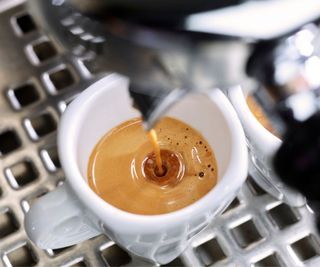
Before we dive into the best coffee makers, you might want some help choosing the type of coffee maker you want. I've got some good news for you: every coffee maker caters to very different drinking needs. This table will give you a quick insight into each brewing style. I'll dive deep into the different brewing styles; best machines; and pros and cons of each further down.
| Type | Buy it if: | Cons |
|---|---|---|
| Drip coffee | You want large quantities of light coffee | Should be brewed in big batches |
| Espresso machine | You want professional, speciality coffee | Time-consuming; fiddly; easy to get wrong |
| Bean to cup | You want automatic, quality coffee | Expensive |
| Single-serve | You want fast, cheap, automatic coffee | Plastic waste, lower quality |
| French Press | You want strong, quality coffee | Brew time and clean up |
| Pour-over | You want light, fast, cheap coffee | Prep time and clean up |
| Moka pot | You want high-quality, strong espresso-like coffee | Need a gas range |
| Percolator | You want straightforward coffee | Easy to over-extract |
| Cold brew | You want strong, smooth, cheap coffee | Brew time |
Drip coffee maker
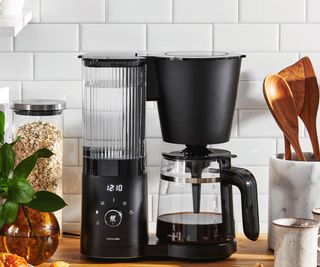
An ever-popular, endlessly drinkable, easy brewing method
Drip coffee, also known as filter coffee, is the nation's favorite brewing style. It's a real comfort coffee. The smooth, light, delicate flavors are easy to sip all day long.
One of the most beautiful aspects of drip coffee makers are their sheer simplicity. It's easy to learn how to use a drip coffee maker, so it is perfect for beginners and those who don't want to have to complete a PhD to use their machine.
Most filter coffee makers need you to put coffee grounds in the filter basket. You close the lid, press a button, and then the machine runs warm water over your grounds, collecting them in a carafe. This process is known as 'infusion' and should take around five minutes. More advanced drip coffee machines have timers that can pre-brew and keep your coffee warm, so you can wake up to a fresh brew without lifting a finger. Most are whisper quiet too, so they won't even wake you up when they're brewing.
People love drip coffee makers because they're really versatile in how much coffee they can make. If you want a single serving, you can have one in minutes. If you need a carafe to serve all the extended family, your filter coffee maker has you covered. They're also on the more affordable end of automatic coffee makers (set aside $200-400 for one), so they're a great place to start.
I'll caveat the price with one recommendation. If you want to get full flavors from your filter coffee maker, you need to pair it with one of the best grinders on the market. Freshly ground coffee will have more oils which are more readily available for your coffee maker to extract. Accounting for this in the price of your filter coffee maker can bump up the price, but if you care about specialty coffee, it's worth it.
A real downside of drip coffee makers is that they are often big and they make singular, very simple coffee. There's no intense espresso, creamy cappuccinos, or smooth cold brews here. Some more complicated models might attempt at these specialty orders, but they're never as good as having a proper espresso machine or cold brew coffee maker.
I've tested the best drip coffee machines and these are my three favorites.
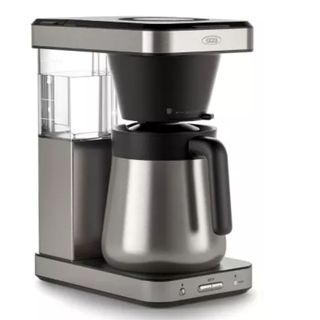
This is our favorite drip coffee maker, because it makes straightforward, great coffee. It meets the Speciality Coffee Association's Golden Cup Standard for its quality, so we know we're drinking the good stuff.
Our OXO 8-Cup Coffee Maker has more details.
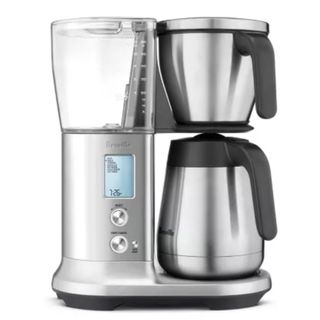
Breville's drip coffee maker takes precise to the next level. It's customizable, with a range of presets that brew delicious coffee every time. From cold brew to over ice, it's got you covered.
Our Breville Precision Brewer Thermal Coffee Maker review has more details.
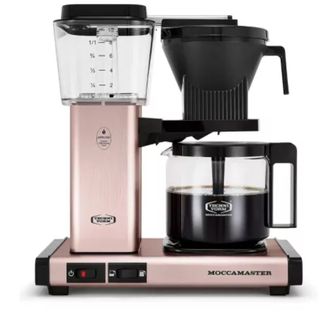
This Moccamaster is all about luxury. It's extremely quiet and crafted to meet the qualifications set by the Specialty Coffee Association and the European Coffee Brewing Center. Trust us, you can taste it.
Our Technivorm Moccamaster KBGV Coffee Maker review has more details.
| Flavors | Light and clean |
| Difficulty level | Beginner |
| Price | $200-400 |
| Versatility | Most make simple, black coffee |
| Speed | Approx 5 minutes for up to 8 cups |
| Capacity | 1-12 cups |
| Size | Often large |
| Maintenance | Low - rinse regularly |
Espresso machine
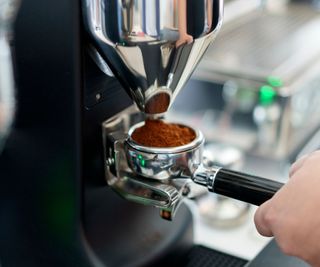
For the scientific and specific coffee experts who want to get technical
If you've ever admired the set-up on display in your local café, you've been looking at espresso machines. These technical pieces of kit make rich, intense shots of coffee. Espresso shots are often compared to syrup in texture. These machines can easily make an Americano: just add water to your espresso. If you want to know how to make a cappuccino, you just steam milk and add it to your espresso.
Espresso machines are at the opposite end of the spectrum to drip coffee makers, because they use high pressures and temperatures to extract all the flavorful oils out of your coffee beans. This means that they're some of the most expensive coffee makers on the market as well as some of the most technical ones too.
If you want to know how to make an espresso, you'll have to be ready for an involved process. You'll use a heavy portafilter, which slots into your espresso machine like a key into a lock. You fill your portafilter with finely ground coffee, then flatten your grounds with something called a tamp. Then, lock your portafilter into place, before choosing a setting on your coffee maker. The machine will then get to work, extracting a shot (1.5-2 oz) of coffee from your machine. The average shot takes 20-30 seconds to make, but setting up will need at least two or three minutes. Some machines need five minutes to warm up.
There are different grades of espresso machines that you can invest in. Super-automatic and automatic espresso machines are effectively bean-to-cup machines, which I've dedicated a separate section in this buying guide to. You won't have to handle the portafilter or tamper, instead, this will make coffee at the touch of a button.
Semi-automatic espresso machines are the ones you're probably thinking of when you imagine espresso machines. They have a nice balance of involvement and independence. These machines will probably grind your beans for you (if they have a grinder) and they'll create the pressure and extract your espresso shot for you too. What you'll need to do is lock-in your portafilter and tamp your coffee.
Manual espresso machines go back to basics. You'll be involved in creating steam and there will be a lever that you pump to create the pressure needed to extract your delicious coffee oils. I would only recommend these to real coffee experts, even I, a former barista. find them to be a lot to handle. You also need a specialist grinder for most manual coffee makers.
If you're interested in getting technical, this is a great machine for you. The grind size, tamp pressure, and brew time will all affect your coffee. As a hands-on process, it's easy to change a lot of factors to reach your desired cup. However, this high technicality and performance comes at a price. You can expect an espresso machine to cost between $500 and $1,500.
These are my favorites, but if you want more we have a roundup of the best espresso machines.
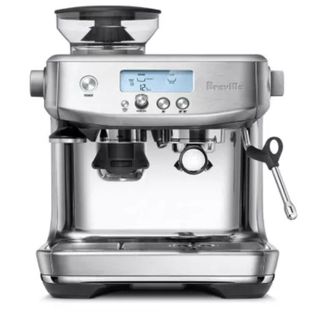
As an espresso machine, this is hard to fault. It's intuitive to use, but has the technical ability to cater to a sensitive coffee drinkers palette. It might be big and at the top end price wise, but it's worth it.
You can find out more in our Breville Barista Pro review.
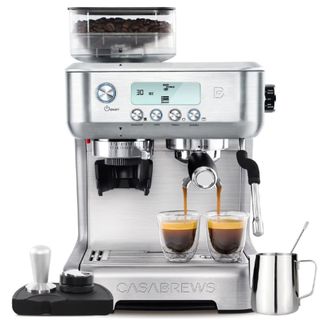
The TikTok famous Casabrews wins when it comes to value. I found the steam wand really intuitive. It's a little slow, but amazing value when you considering the has an integrated grinder, replacement grinder, and a host of other useful accessories too.
You can find out more in our Casabrews 5700 Pro review.
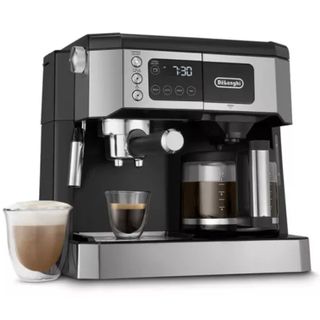
If you like your drip coffee as much as an espresso and sometimes you like to froth your milk, you can also get combination machines like this, too.
You can find out more in our De'Longhi All-in-One Combination Coffee Maker review.
| Flavors | Rich and intense |
| Difficulty level | Advanced |
| Price | $500-1,500 |
| Versatility | Very versatile - makes espresso, hot water, and can steam milk |
| Speed | Five minute warm-up, 30 seconds to brew |
| Capacity | Makes 1-2 shots at a time |
| Size | Often large |
| Maintenance | Medium - regular rinse and deep cleans needed |
Bean to cup
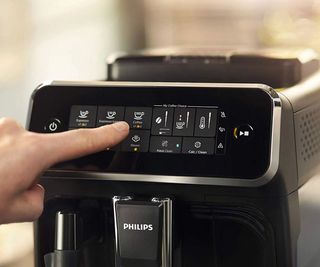
For the hands-off, top-quality coffee drinkers
If you like the finer things in life, you're probably in the market for a bean-to-cup coffee maker. Technically, these are known as super-automatic and automatic espresso machines, but I've put them in a category on their own, here's why.
You can make a whole menu of coffee drinks with one of these. They're aimed at beginners or those who don't want to have to get technical and involved for their morning pick-me-up. All you have to do is add beans, put a cup underneath your machine and you'll get the perfect cup of freshly ground coffee. Whether your go-to is an espresso, a cappuccino, drip coffee, or cold brew, chances are, your bean-to-cup machine has you covered.
Bean-to-cup machines tend to win on flavors, because there's next to no time between you grinding the beans and drinking them. The machine has presets for every coffee type, so you can't really go wrong with brewing. More luxurious machines will let you manually adjust strength ratios, some will let you set personal preferences for different members of the home too.
The best bean-to-cup machines will also texture milk for you. Learning how to steam milk takes a lot of time and practice, so I think this is one of the biggest selling points of automatic coffee makers. In most cases, they'll pour the perfectly textured milk straight into your cup for you. De'Longhi and Philips' models do well with dairy and plant-based milk, but that's not universally true. If you love your oat and almond milk, always do your research. Default steaming settings don't suit more temperamental milk.
Bean-to-cup machines sell you the dream, but they sell it at a price. You won't find a good one of these for much less than $700. I'd make room in your budget for up to $2,000. That sounds like a lot, even these will save you money in the long run. They're often well-built, especially De'Longhi's machines, so you know they'll be your countertop companion for a long time.
Our favorite bean-to-cup machine is the Philips 3200 LatteGo. It's easy to use and can make a range of different coffee types. It'll also froth your coffee consistently every time. You end up paying more for a machine like this, but that's because it does so much for you.
If you're a committed coffee drinker, even the most expensive coffee makers will save you money long-term. I'd expect to pay up to $1,000, but there might be somewhere you spend a little more for a special feature, like super-fast cold brew on De'Longhi's new machine.

This exceptional coffee maker is our top pick overall. It can brew five different types of coffee in a matter of minutes. Our expert reviewer was particularly impressed with the LatteGo milk system, which made silky smooth milk every time.
You can read more in our full Philips 3200 Series review.

Some might say that over 52 different coffee types is unnecessary, but we think it's essential. If you want to get excited about really good quality coffee, this is the machine for you. We love everything except the price.
You can read more in our full De'Longhi Eletta Explore review.

With ten different coffees at the press of a button, this automatic coffee machine is seriously impressive. Our expert, Millie, marvelled at the consistently premium taste delivered by the Jura. It's really quiet and slightly smaller than other models too.
You can read more in our full Jura ENA 8 review.
| Flavors | Fresh, full, and easy to adjust |
| Difficulty level | Beginners |
| Price | $700-2,000 |
| Versatility | Covers most coffee orders |
| Speed | Five minute warm-up, 30 seconds-2 minutes to brew |
| Capacity | Makes one coffee at a time |
| Size | Often large |
| Maintenance | Low - often these clean themselves |
Single-serve coffee maker
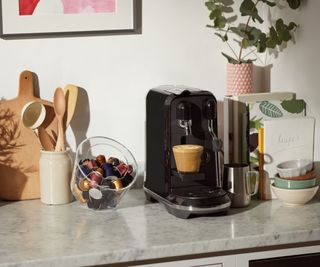
For simple, speedy single-servings of coffee. The flavors aren't fresh, but the machines are only getting better
Single-serve machines are a lot like bean-to-cup machines, but without the grinding. They use pods, or capsules, to make speedy, simple coffee. The flavors are generally not as fresh as espresso machines, but they're a great option if you want convenient coffee but can't stomach instant.
Single-serve machines work using pods. You'll need to buy single-use, or re-usable capsules like these from Walmart, which are packed full of coffee grounds. Pop one in your machine, press a button, and put a cup underneath. Your coffee maker will be able to fill up a cup with everything from a single espresso to a tall Americano in under a minute. Most single-serve machines will only make black coffee. However, some more luxurious models will come with milk frothing functions too and others will recommend that you buy one separately; Nespresso's Aeroccino, available at Walmart, is a typical example.
Some people say that you can't have fresh coffee, tailored to your tastes, but with reusable pods and a variety of coffee pod flavors like this range of 40 K-Cup flavors at Amazon, it's pretty easy to find ones that you'll enjoy.
You can flick a switch and have your coffee close to instantly, so single-serve machines really suit busy lifestyles. They're great for small spaces too, because these machines rarely require more than a toaster's space on the countertop. You can get some incredibly compact options (Nespresso's Vertuo Pop is tiny and still delivers consistently delicious coffee).
Of course, you'll need to stay on top of your capsule collection, because if you run out of pods, you won't get very far with your coffee maker. Disposing of your empty capsules can be tricky. You need to find special recycling points and plenty of people don't bother. Eco-conscious coffee drinkers will need to pick carefully. There are plenty of B-Corp-certified machines which work with compostable capsules, the illy ESE and Grind One Pod are just two of plenty, but you'll need to look carefully.
Whilst single-serve machines are generally cheaper (they should cost between $100-300) than most other automatic coffee makers, they'll probably also feel cheaper. Most models have plastic shells and inexpensive skeletons, designed to last a few years rather than a lifetime. Again, Grind's One Pod is an exception, but if you're looking for a durable coffee maker, drip coffee or a bean-tp-cup machine will be a better investment.
These are my favorites, but if you want more we have a roundup of the best single-serve coffee machines.
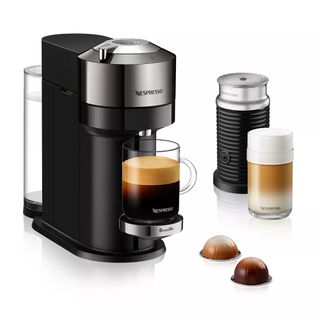
With a small footprint, the Nespresso Vertuo line is both petite and perfect for brewing coffee in compact areas. This is made from recycled plastics and offers a versatile range of coffee flavors.
You can read more in our Nespresso Vertuo Next review.

I love this for fresh, speedy coffee. The Cusinart makes bold, filter-style coffee, which it grinds itself. The single-serve capsules are reusable too, so this ticks a lot of boxes.
You can read more in our Cuisinart Grind and Brew review.
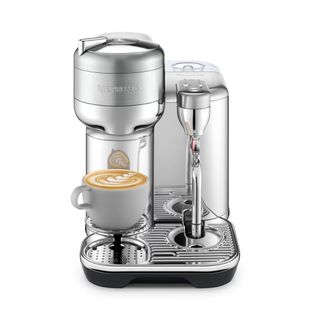
When I mentioned luxury, this is what I had in mind. The smart, milk-frothing machine is championed by none other than David Beckham. It's a splurge, so shop it in the sales if you can.
You can read more in our Nespresso Vertuo Creatista review.
| Flavors | Good, but often a little flat |
| Difficulty level | Beginner |
| Price | $100-300 |
| Versatility | Most only make espresso and black coffees unless you buy a milk frother |
| Speed | 30 seconds-1 minute to brew |
| Capacity | One cup at a time |
| Size | Most are very compact |
| Maintenance | Low - occasionally rinse when needed |
French press
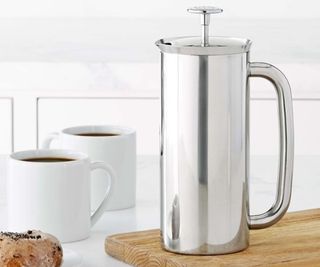
For full-bodied coffees with more bitter and acidic notes. They're slower to brew but harder to get wrong
As you might have guessed from the name, French presses are very European. You've probably seen these sat on a wooden tray next to a croissant on an Instagram picture with the caption 'Slow Sundays', because that's exactly where these come alive. The process is slow and mindful, delivering a delicious, rich cup of coffee.
The flavor profile of French press is often described as acidic and bitter, which won't appeal to everyone. It's certainly rich and intense and not often very sweet, but that means that it can really draw out more earthy, nutty nuanced notes in your coffee.
Learning how to make a French press coffee is easy, so it's often a method I recommend to beginners. You put a spoon of coarse coffee grounds in the bottom of your carafe, pour warm water over your coffee, and let it steep for five minutes. After plunging, you need to pour out and drink your coffee instantly, otherwise, it will keep brewing and you'll over-extract your coffee.
The beauty of a French press is that it's small, silent, and easy to store. You don't need to make lots of noise when brewing with one of these and the clean-up is similarly simple. You'll need to keep on top of filter maintenance because if you don't have a good seal and filter, your coffee will taste a little grainy.
If your interest is piqued by French presses, you'll also want to look into pour-overs (I've dedicated a whole article to the differences between pour-over and French press coffee). Neither makes much noise, but a pour-over is lighter in flavors and more evocative of filter coffee.
I wouldn't expect to pay much over $100 for a good French press, so it's excellent if you're on a budget. My only word of warning is that these are easier to break. I've smashed more glass carafes than I care to admit, so if you know you're clumsy, make sure to invest in a stainless steel model.
I've also looked into other uses for a French press and they are extremely versatile. You can make cold brew, infused oil, French press tea, and much more in your carafe. These are my favorites, but if you want more we have a roundup of the best French presses.
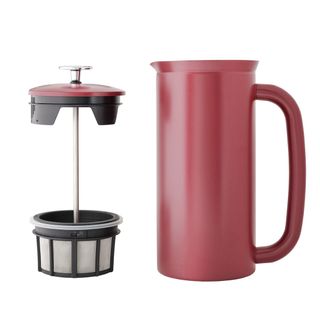
This French press is top-quality, as well as at the top of our price range. It makes an incredible cold brew, is well-insulated, and easy to use. You get what you pay for.
You can read more in our French press buying guide.
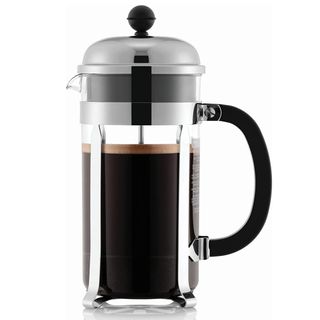
Contemporary and elegant, the Bodum French press is a beautiful French press. It's easy to use and clean and the double filter helps to deliver a smooth cup of coffee.
You can read more in our Bodum Chambord review.
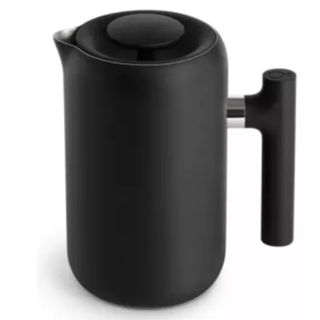
Fellow products never fail to deliver on quality and design. The 360-degree pour spout, non-stick interior, and ratio aid lines make this a well-designed, stylish addition to your coffee collection.
You can read more in our Fellow Clara review.
| Flavors | Rich, bold, acidic |
| Difficulty level | Beginner |
| Price | $20-100 |
| Versatility | Only makes black coffee, but has alternative uses |
| Speed | 5 minutes |
| Capacity | Up to 12 cups |
| Size | Most are very compact |
| Maintenance | Low - only the filter needs close attention |
Pour over
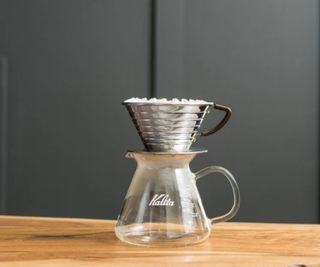
For a delicate coffee, artisanal flavors, and an easy clean-up
If you like delicate coffee, but you don't need a big appliance, pour-over coffee is an excellent option. You don't need to plug your pour-over coffee maker into electricity, simply sit filter paper in the funnel, place your coffee grounds in the funnel, and pour water over it.
The key to proper pour-over success actually lies in the kettle. Pouring from a normal spout doesn't give you much control over the flow of water. If, instead, you have a gooseneck kettle (I would recommend the Fellow Stagg from QVC), you can make sure that you're evenly saturating your coffee grounds, giving a well-balanced, flavorful cup of coffee.
The brewing process can take up to 15 minutes, but if you like delicate coffee it's a great option. As with drip coffee makers, you'll either need to grind your own coffee or buy fresh grounds to enjoy the flavors fully. Reusable paper can be wasteful, but you can buy a re-usable insert like this one from Walmart instead. It makes the clean-up more complicated than simply throwing away paper, but it's worth it.
When you're looking at different models, you'll notice that there are single-drain pour-overs and ones with multiple drains. A single drain hole beans that your water doesn't have much resistance, so it's easy to customize the flavors in your cup of coffee. You'll need to be more precise in your technique if you want to achieve a clear, well-balanced flavor.
Most single-drain pour-overs are cone-shaped. If you're new to the pour-over team, look for a flat-bottom brewer. It'll have multiple drain holes, meaning the precision of your pours matters a little less.
If you're money conscious, this is an excellent option, since these tend to cost no more than $50. If you're careful, they'll last a lifetime too. If you're clumsy, make sure to opt for a metal pour-over rather than a porcelain or glass option.
Genevieve Kappler, Director of Coffee at Roasting Plant, recommends using different pour-overs with different coffees. She says that 'using a Chemex with an Ethiopian bean will elevate its sweet, tropical fruit, and delicate floral flavors. Using a Kalita with Guatemalan or Peruvian beans will create a more citric, bright, and refreshing result and you have to try Mexican beans in a V60. They're sweet and floral'. There's a lot of variety within pour-overs, so you'll never get bored.
These are my favorites, but if you want more we have a roundup of the best pour-over coffee makers.
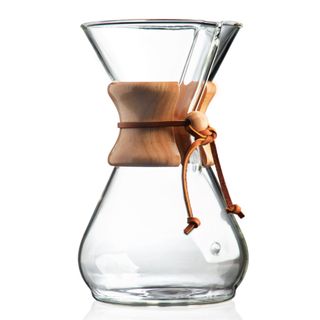
For ultra-smooth coffee that can cater for up to eight people, the Chemex is the perfect choice. It's easy to clean and you can keep it in your refrigerator too.
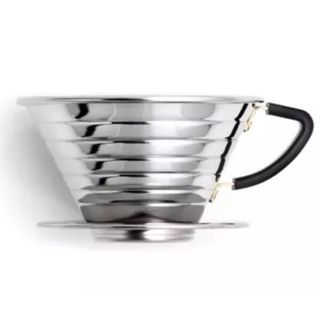
Chic and trusted, the Kalita Wave has established itself as one of the best pour-overs available. The design is traditional and it produces a really smooth cup of joe.
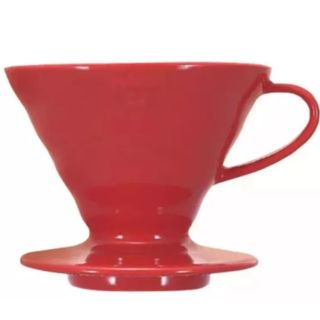
This premium pour-over has been crafted from ceramic, which is well-known for its heat retention. The shape and single drip hole allows you to customize your cup too.
| Flavors | Light and delicate |
| Difficulty level | Intermediate (for pouring) |
| Price | $20-100 |
| Versatility | Only makes black coffee |
| Speed | 15 minutes |
| Capacity | Often single servings only |
| Size | Most are very compact |
| Maintenance | Low |
Stovetop or moka pot
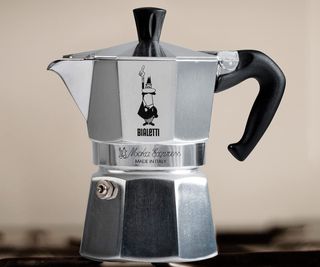
If you enjoy espresso flavors, but don't want to pay the professional price tag
Much like an espresso machine, the coffee that a moka pot will make is smooth, intense, and rich. It has the same syrup-ey texture and I'm convinced that most coffee drinkers wouldn't be able to tell the difference between moka pot and espresso machine coffee if they were blindfolded. The process is different to an espresso machine, which for some people is a dream come true, for others, it's less so.
Making coffee in a moka pot is a lot like espresso machines at the start. You'll need to use finely ground coffee, tamped down into a chamber. Then, you screw a top chamber onto your grounds and place your moka pot on the stove. As the water boils and forces itself up through your coffee grounds, you'll get coffee collecting in the top chamber. The whole process shouldn't take more than five minutes and you can drink your coffee straight away.
Even the best moka pots are much cheaper than an espresso machine. They're much quieter, but they also do a lot less. You can only make black coffee and your moka pot will likely become hot as it sits on the stove. If you have an induction hob, you'll have to choose a model carefully. These are designed for gas stoves normally.
Moka pots tend to cost $30-130, so it's a great entry point for espresso drinkers. They also don't need much space, so you can store them neatly away when they're not in use. Alternatively, the moka pot aesthetic hasn't changed in decades. These retro pieces make great design features. Dolce & Gabanna's collaboration with Bialetti is a particularly striking design that I'm still obsessed with and I tested it months ago.
I've written a buying guide to the best moka pots. You'll see that they're mostly from Bialetti because the brand has dominated the market since they were founded.
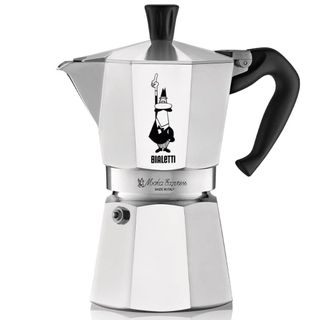
This moka pot is about as authentic as it comes. It sits easily on the stovetop and comes in a range of sizes for various different households. You can see this in museums it's that iconic.
| Flavors | Rich, intense, sweet |
| Difficulty level | Intermediate (some fiddly steps) |
| Price | $20-100 |
| Versatility | Only makes black coffee |
| Speed | 5 minutes |
| Capacity | 1-12 cups |
| Size | Most are very compact |
| Maintenance | Low |
Percolator
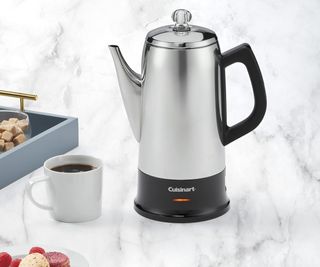
For those who like it hot and fresh
Percolators are better than drip coffee makers for keeping your coffee warm for longer, without it tasting stale. The resulting coffee tends to be deep and smooth, a lot like drip coffee, but stronger. It's easy to provide for a crowd with a percolator, but the process isn't as easy as others.
You'll need to use coarse coffee grounds and place a paper filter inside your basket. The next part of the process is similar to a moka pot: you place the basket into the percolator base and screw all the parts together. The percolator sits on the stove and, as water boils, it forces itself through the filter and coffee grounds. This results in smooth, rich coffee. The process will take a maximum of ten minutes in total.
It sounds a lot like a moka pot, but here's the difference: a percolator forces water through coarser coffee grounds. A moka pot uses steam to push water vapor through fine grounds. This means that moka pot coffee tastes a lot more like an espresso and a percolator coffee tastes like a rich cup of filter coffee.
Another difference between moka pots and percolators is the clean-up. You'll need to watch your percolator more carefully and select the right appliance for your stove, whether it's gas or electric.
I recently spoke to a customer who wanted a percolator because it doesn't take up valuable countertop space. It's easy to store away and doesn't have the features that she doesn't need (a clock, strength settings, and a timer). If this sounds like you, the percolator might just be perfect. Be ready to spend up to $150 for a good percolator, but it'll be worth every cent.
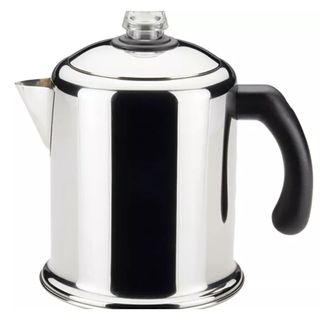
This is the lowest cost recommendation I have for a percolator. This stainless steel model is simple, and durable, but beautiful too. It's one of the most popular on the market too.
| Flavors | Light and fresh |
| Difficulty level | Intermediate (the process is fiddly) |
| Price | $20-100 |
| Versatility | Only makes black coffee |
| Speed | 15 minutes |
| Capacity | Often single servings only |
| Size | Most are very compact |
| Maintenance | Medium (they need some TLC when washing) |
Cold brew

The coffee trend that's going to stick around: this will convert anyone to drinking coffee
Cold brew has smashed onto the scene, delivering sweeter, smoother coffee than a hot brew. It's not iced coffee, because that's hot coffee that has been cooled. Iced coffee is often sour and a little bitter. When I say cold brew is smooth, add an extra 'oo', this is like drinking velvet.
You can buy a special machine to make cold brew coffee, or you can use a French press. If your machine isn't a specialist, it's likely that the process will be slow. If you look up how to make cold brew coffee at home, experts will tell you that your coffee needs to steep for at least 16 hours. Some will even recommend 24 hours.
Cold brew coffee makers obviously make the whole process easy. You can put your grounds in and press a button, or sit them on the countertop. More traditional cold brew coffee makers will ask you to use coarsely ground coffee and filtered water. The product you make is a cold brew concentrate, which differs slightly from cold brew. You'll need to dilute it in twelve parts water to get a normal-strength cup of cold brew coffee.
Some people say you don't even need a coffee maker for these. You can DIY it and use a water bottle and filter paper. Your results won't be as smooth and your set-up certainly won't be as slick, but you can test out cold brew before diving deep into your purchase.
These coffee makers generally aren't very expensive. I'd spend between $30-$150 on one. If you want to mix up your brewing methods, there are plenty of coffee makers with cold brew functions. Nespresso has cold brew capsules, Breville's drip coffee maker has a cold brew setting, and both the De'Longhi La Specialista and Eletta Explore have automatic cold brew settings.
Here are three of my favorites, but I've written and tested some of the best cold brew coffee makers, which you can read about here.
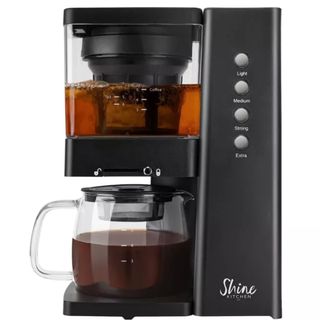
For tea and coffee drinkers alike, this fast cold brew machine is a brilliant buy. I was sceptical that it would be able to achieve the same results as a slow cold brew, but it's brilliant.
You can read more in our Rapid Cold Brew review
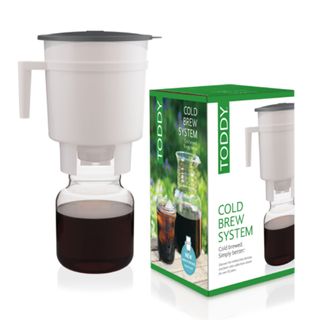
Iconic amongst cold brew drinkers, the Toddy system makes cold brews easy. I'm currently testing one, so will be able to update you on the taste results, but so far, so good.
You can read more in our Toddy Cold Brew review
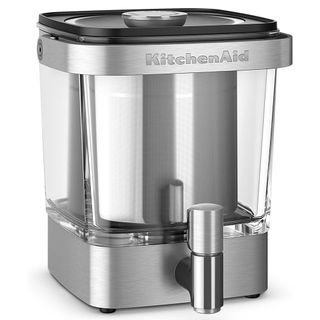
I've struggled to get my hands on one of these, but I'm assured that the KitchenAid Cold Brew coffee maker is incredible. Watch this space for updates, but users say it's easy to use and makes delicious cold brew.
You can read more in our KitchenAid Cold Brew review
| Flavors | Light and delicate |
| Difficulty level | Intermediate (for pouring) |
| Price | $20-100 |
| Versatility | Only makes black coffee |
| Speed | 15 minutes |
| Capacity | Often single servings only |
| Size | Most are very compact |
| Maintenance | Low |
How to choose the best coffee maker for you
There are key things to think about when choosing a coffee maker. When you have the answers to these, the rest is easy:
Coffee Type
It goes without saying that you need to be able to make your favorite coffee. If you like a latte, it's better to pick a machine that has milk frothing capabilities. If you prefer cold brew, make sure your coffee maker has a setting that will keep you happy.
Space
If you have lots of space, you can choose almost any coffee maker. However, if your kitchen is compact, you'll probably want to steer clear of espresso machines and automatic coffee makers. These tend to be big appliances. You could still fit them on your countertop, but you'd have to work to do it.
Time
If you don't mind taking your time with coffee, then you'll have the pick of the bunch. However, if you're normally five minutes late for being ten minutes late, you'll want a quick machine. Pod maachines, pre-set drip coffee makers, and automatic machines will be your best friends. Capacity If you're the only coffee drinker in the house, you might not need a big machine. Pour overs are an excellent option for single-cup coffee drinkers. However, if there's ten of you in your home, a drip coffee maker will cater to the masses.
Ease
If you normally buy your coffee from a barista, you might not enjoy being very hands-on when making coffee. For that reason, a bean to cup machine would suit you really well. It'll be just like your barista, but without the small talk. If you like the idea of becoming a barista yourself, espresso machines are at the other end of the scale. They can be a lot of fun too.
Price
It goes without saying that price has to be factored into things. A French press or pour over can cost a tenth of the price of a bean to cup machine or espresso machine. It's better to start small and work up to a bigger machine. That being said, we've included these machines in our roundup because we think they're good value. I've tested machines worth more money and you can't tell the difference.
FAQs
How much should I spend on a coffee maker?
You can trust Homes & Gardens.
This will depend on the coffee maker that you buy. You could spend anything from $30 to $2,000, but I wouldn't spend much more than that. When I say $30, I have pour-overs and French presses in mind. The materials used for these keep the costs low and you definitely shouldn't spend more than $150 on them.
When I'm talking about spending thousands of dollars on a coffee machine, I expect it to be an espresso machine, especially an automatic model. If you're happy to work hard and hands-on, experimenting with your espresso machine, you'll be able to pick up a model for around $600, just don't expect any automation or a grinder.
In the middle of inexpensive French presses and fancy espresso machines, you'll find drip coffee makers. If you've got about $200-$300 to spend, you'll be able to get a quality model. These won't have integrated grinders, so set aside some budget for that (more on grinders below).
As your budget gets bigger, coffee makers will probably become more convenient and versatile. Set expectations for what you want and what you're happy not to pay a premium for and choose carefully.
Do I need to buy a coffee grinder to go with my coffee maker?
Unless your coffee maker has an integrated grinder, yes you do. You can buy pre-ground coffee from the stores, but as soon as the beans have been ground up, the delicious oils in them start breaking down, tasting flatter and less delicious. Freshness plays an immense factor in the flavors of your coffee. Luckily, we have done a roundup of the best coffee grinders on the market, so you don't have to do any searching.
Sign up to the Homes & Gardens newsletter
Design expertise in your inbox – from inspiring decorating ideas and beautiful celebrity homes to practical gardening advice and shopping round-ups.

Laura is our eCommerce editor. As a fully qualified barista, she's our expert in all things coffee and has tested over thirty of the best coffee makers on the market. She has also interviewed Q-Graders and world-leading experts in the coffee industry, so has an intimate knowledge of all things coffee. Before joining Homes & Gardens, she studied English at Oxford University. Whilst studying, she trained as a master perfumer and worked in the luxury fragrance industry for five years. Her collection of home fragrance is extensive and she's met and interviewed five of the world's finest perfumers (also known as 'noses'). As a result of this expansive fragrance knowledge, she always puts quality and style over quantity and fads. Laura looks for products which have been designed simply and with thoughtful finishes.
- Alex DavidHead of eCommerce
- Millie FenderHead of Reviews
-
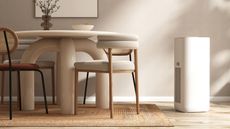 Do dehumidifiers help with mold? Here's what the experts say
Do dehumidifiers help with mold? Here's what the experts sayDay to day activities can increase moisture and lead to mold, so is a dedicated appliance worth it?
By Dan Fauzi Published
-
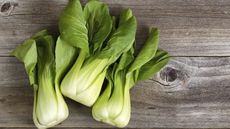 How to grow bok choy – a simple cool-weather vegetable ideal for multiple harvests
How to grow bok choy – a simple cool-weather vegetable ideal for multiple harvestsBok choy, or pak choi, can regrow after cropping, so prepare for lots of pickings
By Drew Swainston Published
-
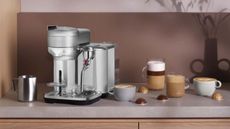 Nespresso vs espresso – tested for taste, cost, and technical differences
Nespresso vs espresso – tested for taste, cost, and technical differencesA barista offers some perspective on the Nespresso vs espresso debate. She's tested them for taste, and accounted for cost differences too
By Laura Honey Published
-
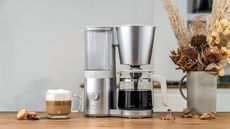 I just tested the best small drip coffee maker – and it's surprisingly stylish too
I just tested the best small drip coffee maker – and it's surprisingly stylish tooI've tested a range of filter coffee options and it turns out that the best small drip coffee maker is beautiful, sleek, and smart too
By Laura Honey Published
-
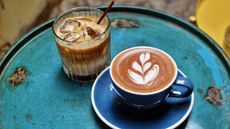 Best iced coffee makers 2024 – tested by a barista
Best iced coffee makers 2024 – tested by a baristaThese are the best-iced coffee makers on the market, whether you want a machine that makes hot and cold coffee or a special one for your iced lattes
By Laura Honey Last updated
-
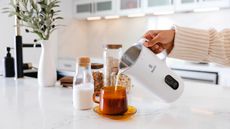 Best nut milk makers 2024: tested by an expert vegan
Best nut milk makers 2024: tested by an expert veganThese are the best nut milk makers for almond, oat, coconut milk and more. Our expert vegan barista tested them to see which is best
By Laura Honey Published
-
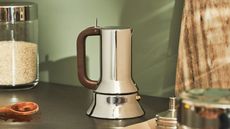 Best moka pots 2024: barista-approved Italian coffee
Best moka pots 2024: barista-approved Italian coffeeThese are the best moka pots on the market, covering everything from basic to automatic coffee. We've got some super stylish options too.
By Laura Honey Published
-
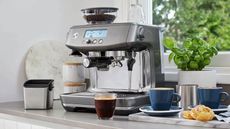 Best coffee makers with grinders 2024 – for effortless, fresh coffee
Best coffee makers with grinders 2024 – for effortless, fresh coffeeThe best coffee makers with grinders span from simple filter carafes to professional espresso makers. Our team have tested the best
By Laura Honey Published
-
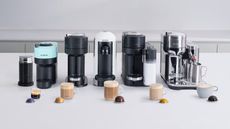 Best Nespresso machines 2024 – for every kind of coffee drinker
Best Nespresso machines 2024 – for every kind of coffee drinkerHow do you know whether you want the Lattissima or the Creatista, the Vertuo or the Original, and the Essenza or the Pop? We have the answers
By Laura Honey Last updated
-
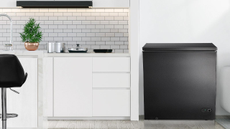 Best chest freezers 2024: spacious, dependable, and practical
Best chest freezers 2024: spacious, dependable, and practicalI've researched the best chest freezers on the market. From garage-friendly to enormous capacity, these are my top picks.
By Lydia Hayman Last updated
